Real Vs. Fake Pearls – 11 Ways To Tell The Difference

Is the pearl necklace in your hand real or fake? How can you differentiate between the two? Well, this is not easy.
From shape to size and from color to temperature, many features can help you distinguish the real from the fake.
We will explore eleven different features of real pearls that make them unique and also different from fake pearls.
Real vs. Fake Pearls – 11 Differences
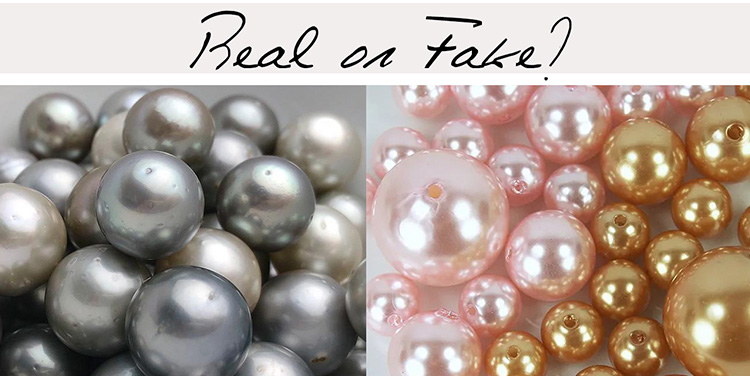
Real pearls can be identified due to their unique attributes. Here are 11 key differences.
#Reals pearls weigh more
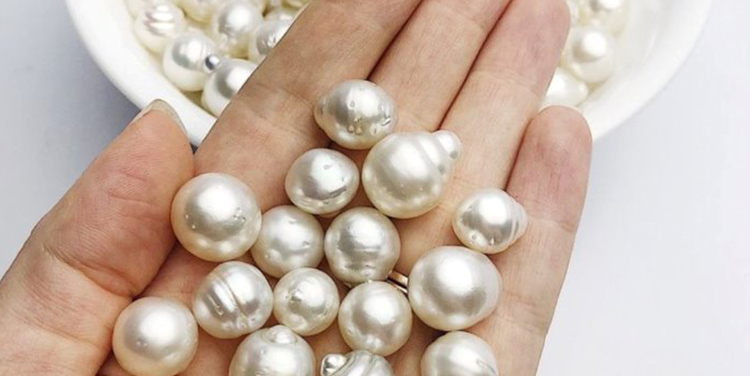
One of the preliminary ways to learn whether the pearl is real or fake is by checking how much it weighs.
Take your real pearl in one hand and the fake one in another, and instantly, you will feel the difference.
The real pearl is heavier than the other. However, the results may be incorrect sometimes.
This is mainly due to the advancement in technology that has led to the creation of imitation pearls that are almost as heavy as their real counterparts.
Raw materials such as shells or composite, if used, can fool you due to their weight.
However, plastic and resin pearls are easily recognized.
#Real pearls are never perfectly round
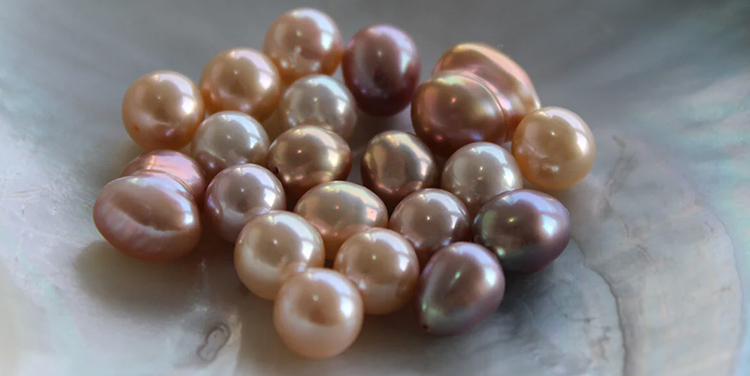
Apart from the weight, the shapes of the pearls can also be studied.
You will come across shapes such as round, semi-round, drop, baroque, and circle baroque, among many more.
These shapes are mainly caused by the shape of the irritant introduced into the oyster.
However, this is not the only way different shapes are formed.
Organic substances attaching themselves to the growing pearls, subtle changes in the salinity and water temperature, and pearl movement while taking shape may all contribute to the unique shape of the pearls.
On the contrary, fake pearls are always round.
There is no difference in the shape or size of the pearls, and they all look alike.
Some real pearls may also be round, but this scenario is rarely found. Hence, they come at an extremely high price.
#Real pearls are slightly gritty
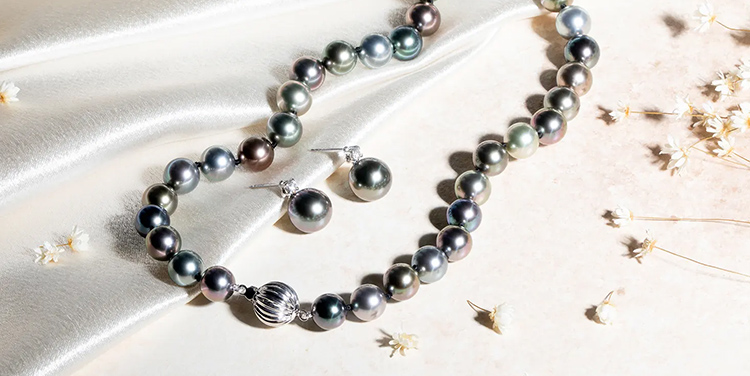
The common misconception about a pearl is that it is smooth like silk.
As surprising as it may sound, real pearls are not smooth.
In fact, they feel a little gritty. This can be confirmed by holding a pearl between your index finger and the thumb and testing it against the biting edge of your front teeth.
Apply side-to-side motion for rubbing. You will realize that its surface is slightly wrinkling, which is not visible to the naked eye.
The surface is grainy and has some regular bumps. There are small, scale-like imperfections on the outer layers of the nacre.
A pearl that seems smooth is not real. Not only this, they are slippery and would slip away from your grip.
But it would be best if you didn't worry, as these are most probably fake or imitation pearls.
Note: Brush your teeth before performing the tooth test, as food residues may interfere with the results of this test.
#Real pearls are radiant
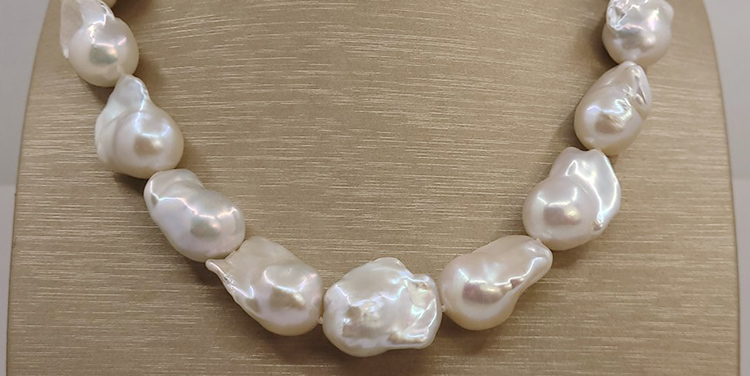
The surface test and the weight evaluation may not be accurate measures of the genuineness of pearls.
So, this next method may prove helpful.
To know whether the pearl is not artificially prepared, take them out in the sun. Real pearls possess radiance, which is not found in the fake pearls.
This iridescent effect is caused by the diffraction of light within the nacre layers.
When real pearls are exposed to the sun, you will notice that they do not match each other exactly.
If, at all, they look uniform, then they are imposters. The latter also lacks the depth and vibrancy of real pearls.
Real pearls have a story of their own with subtle color variations, a hint of mellow yellow, or a whisper of pink.
Look closer, and you may also see your reflection.
However, there is a problem with this identification method.
Low-quality real pearls, with their chalky luster, may look like fake pearls. So, you may have to go for advanced testing in this case.
#Real pearls are cold to touch
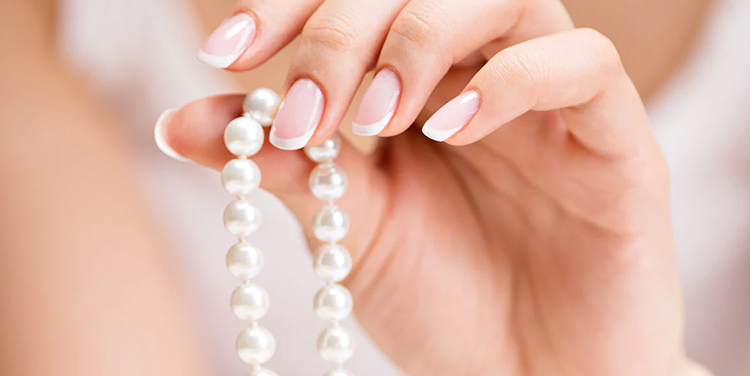
Pearls, as we know, are born and bred in cold water.
They will feel cold when you touch them first, but soon after coming in touch with your body, their temperature will rise.
And this is regardless of the weather conditions.
At the same time, this characteristic can be imitated by some fake pearls, such as those made using glass.
However, glass takes longer to warm in comparison to the real pearls.
All other fake pearls stay warm at room temperature even when not worn by you.
#Real pearls have smaller drill holes
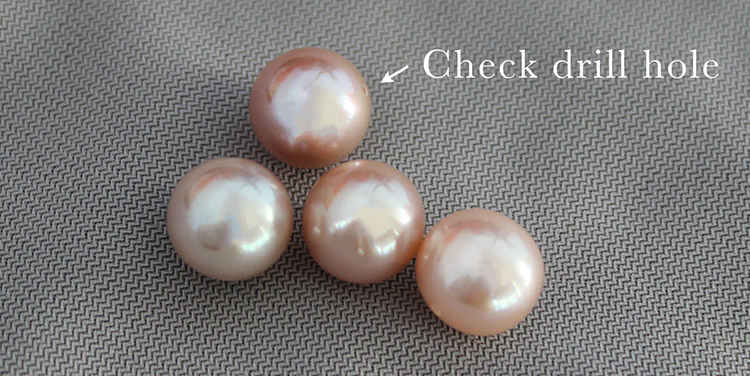
If you look closer, you will witness another subtle difference between the real and fake pearls.
The drill holes in the real beauties are much smaller compared to the fake pearls, and they are really sharp.
The reason lies in the belief of the jewelry designers who feel the sanctity of the natural pearls should not be disturbed by piercing too hard.
So they do it as cautiously as possible. Concurrently, the fake pearls will have paint coming off near the holes due to harsh handling during drilling, and the edges may be rounded.
Cracking or discoloration may also be present in some cases. Just look closer at the finishes, and you will immediately learn the truth.
Real pearls look much more neat near the holes. However, they, too, may develop round edges after years of wear and tear.
Take a magnifying glass and look for a line in between the nacre and the nucleus; it looks much more defined in contrast to artificial pearls that may lack it completely.
#Real pearls are expensive (especially the extra-large ones)
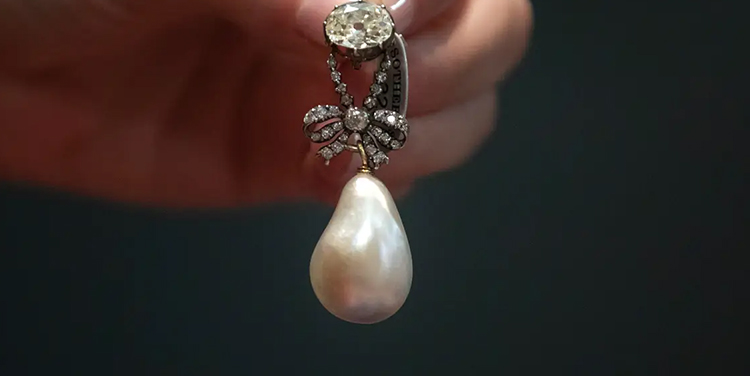
Real pearls come at a price that is often much higher than that of their fake counterparts.
Natural pearls are rare and subsequently very expensive, but even cultured pearls reap high prices.
The latter are manufactured with human intervention and take several years to form, hence demanding a cost they rightfully deserve.
Fake pearls are not that expensive and do not make a hole in your pocket.
#Real pearls make soft, muted sound
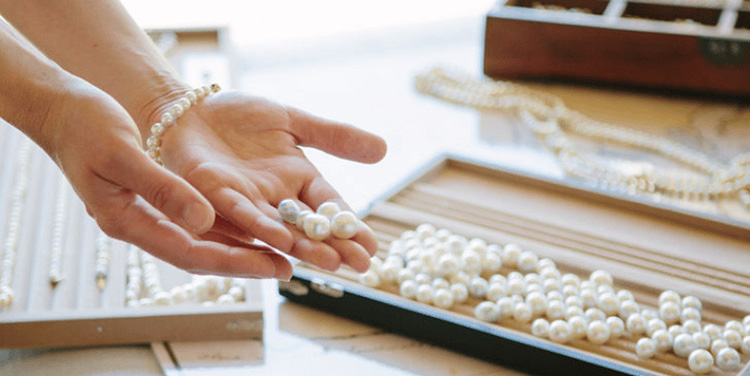
Bring two real pearls together, and you will hear a warm, soft, and thud-like sound.
This is one of the leading features of real pearls. That is unheard of for fake pearls.
When two fake pearls are knocked against each other, they make a metallic, thin sound.
This is an indication or a clear sign of fake pearls.
Even scraping can also be tried out; if the pearls make a sound of a sandy texture, then stay assured that it is a real pearl.
#Real pearls create a powder
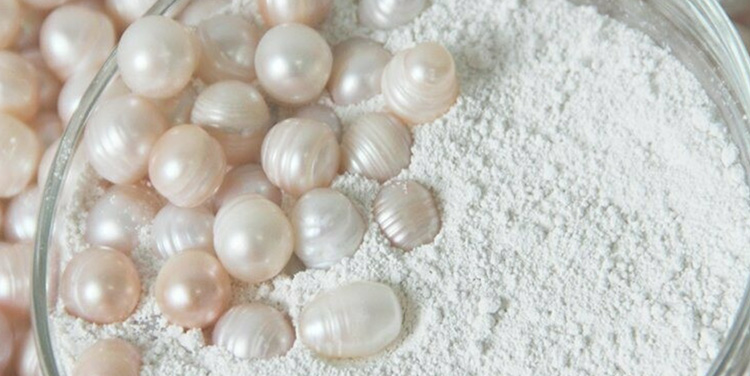
When trying to establish the authenticity of real pearls, try rubbing them together.
However, before trying this out, know that the procedure is slightly invasive and may lead to some degradation.
If you are prepared to face it, only then attempt this test. For this, take two pearls and then rub them against each other.
They will also cause some friction as their surface is not smooth. See if they form some powder.
If so, your pearls are real. This pulverized substance is nacre.
In fact, pearl powder has been used in Chinese medicine since ancient times and carries several skin benefits.
The fake pearls may also drop any residue, but it won't be anywhere close to powder.
#Real pearls have overtones

Natural and cultured pearls can be seen with a translucent color over their main color.
One can distinguish them from fake pearls due to the hints of green and pink on the outer surface.
This is mainly due to the nacre's intricate structure that acts as a natural light-scattering medium, thus producing a spectacle of rainbow-like colors.
Imitation pearls, however, have just one uniform color throughout.
In addition, they may exhibit some colors not found in real pearls, such as red, black, lime green, and purple.
The absence of an overtone is not a definitive sign of a fake pearl.
Other aspects, such as the pearl's luster and nacre quality, should also be examined.
#Real pearls have knots
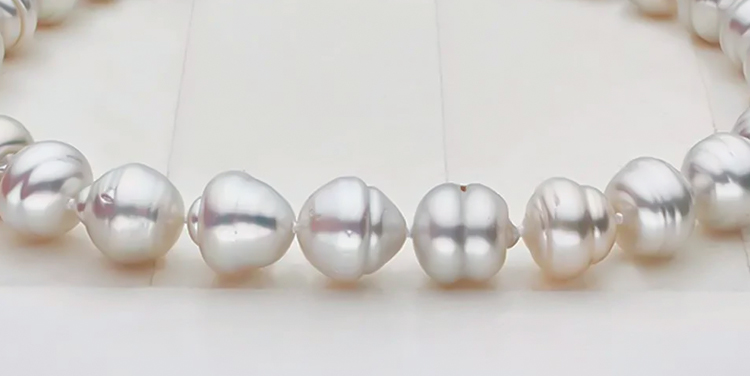
The high cost of pearls makes manufacturers produce pearl necklaces with tiny knots.
The sole purpose is to save the jewel from losing the precious stone, which might slip away if not secured.
Some high-quality fake pearls, too, may come with knots.
But it is interesting to note that no real pearl jewelry will miss this feature, whereas fake pearls may or may not have knots.
While this is a key indicator of authenticity, it is not a highly reliable one.
You may have to look for other features to know the truth.
Conclusion
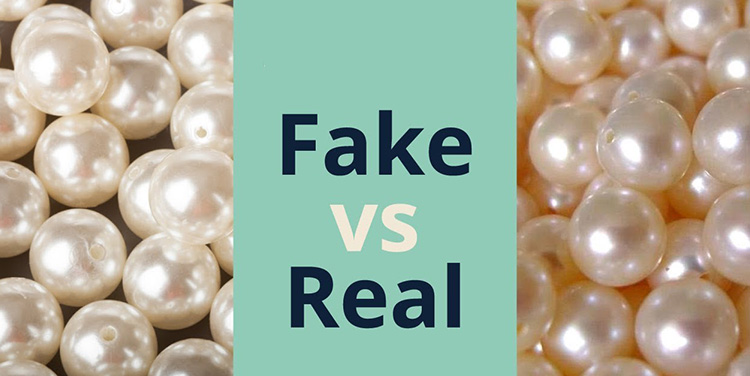
Establishing the authenticity of pearls requires a keen eye and attention to detail.
Yes, it is not easy; however, the distinguishing features above may help you make an informed decision.
Carefully examine the pearl's shape, surface texture, color and luster, temperature, weight, and drilling holes, and you can confidently determine the authenticity of the pearls you encounter.
If you are still unsure, obtain a certificate of authenticity.


+K1001+L100-1-700x700.jpg)
+K1001+L100-2-700x700.jpg)
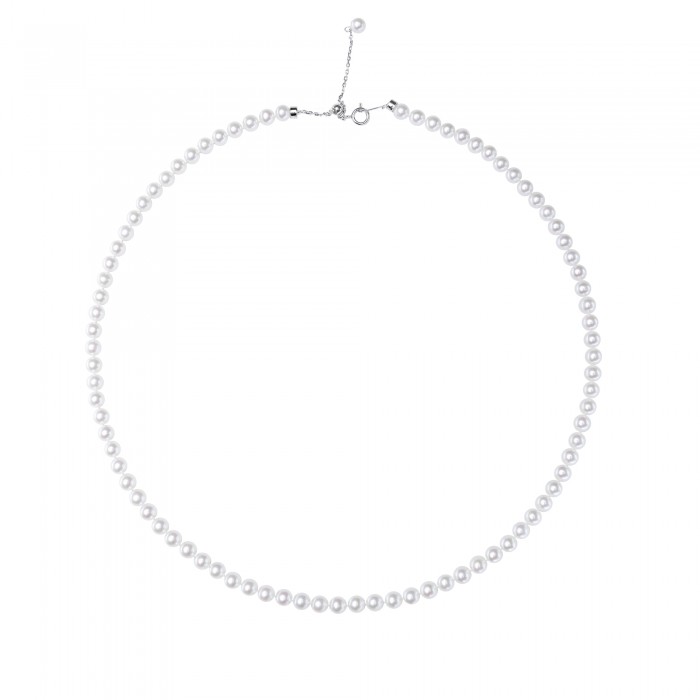
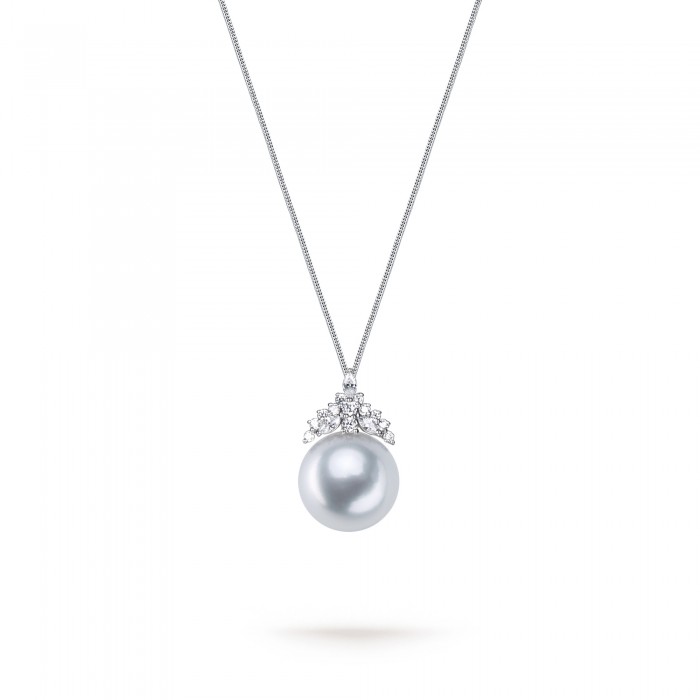
Leave a Comment